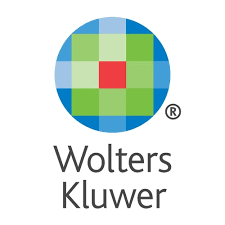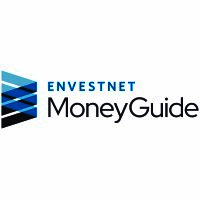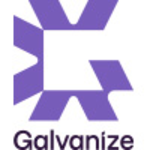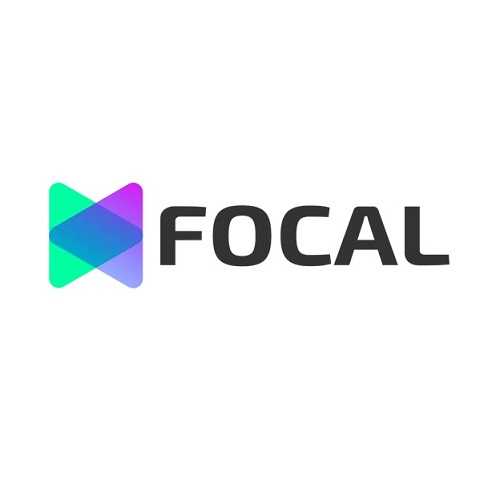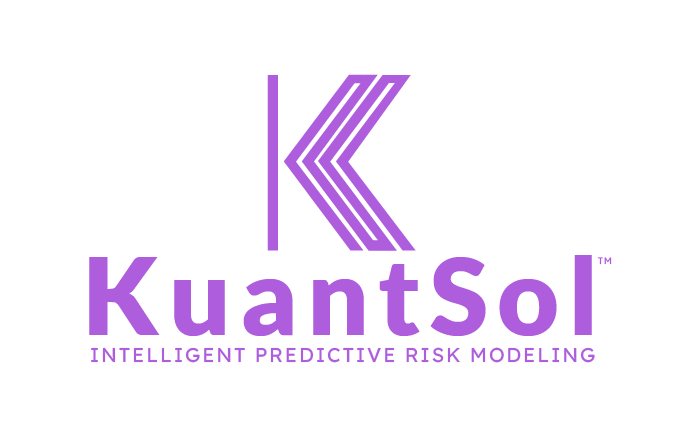What Is Financial Risk Management Software?
Financial risk management software is a strong tool that helps firms detect, assess, and reduce potential financial risks. It is a comprehensive and data-driven solution that allows businesses to proactively manage financial risks such as credit, market, liquidity, and operational hazards. At its foundation, financial risk management software uses a variety of algorithms and analytics to evaluate massive volumes of financial data and identify potential dangers.
It also offers real-time insights and predictive capabilities, helping organizations to make educated decisions and take proactive steps to reduce risks before they have an impact on their bottom line. One of the primary characteristics of financial risk management software is its capacity to consolidate and integrate data from a variety of sources, including financial reports, market data, and risk assessments.
This gives a complete picture of the organization's financial risks, allowing for a more accurate and comprehensive risk management plan. Furthermore, financial risk management software provides configurable risk assessments and scenario analysis, allowing firms to tailor their risk management strategy to their specific requirements and industry standards.
Furthermore, this software helps firms expedite their compliance operations by automating risk reporting and assuring regulatory compliance. This not only saves time and resources, but also lowers the likelihood of noncompliance penalties.
What Are The Recent Trends In Financial Risk Management Software?
The financial world has become increasingly complex in recent years, with new dangers appearing on a regular basis. As a result, the demand for effective and efficient financial risk management software has increased dramatically. Organizations are now seeking complete solutions to address a wide range of risks, such as market volatility, credit risk, and regulatory compliance.
One of the most significant advancements in financial risk management software is the incorporation of advanced data analytics. With the exponential rise of data, traditional risk management strategies have become obsolete. To stay up with the ever-changing market, software companies are using artificial intelligence and machine learning to analyze massive volumes of data in real time, identifying potential hazards and giving actionable insights.
Additionally, there is an increasing need for cloud-based financial risk management systems. Cloud technology provides greater flexibility, scalability, and cost-effectiveness than on-premises software. This enables firms to respond swiftly to changing business needs and scale their risk management capabilities as their operations expand. Another development in financial risk management software is the inclusion of regulatory compliance features.
With an increasing number of regulations and greater enforcement, enterprises are looking for software solutions to help them comply with various rules and regulations. This offers features like automatic reporting, risk management, and audit trails. Furthermore, the increase in cybersecurity risks has driven the creation of risk management software specifically designed to reduce cyber hazards.
These systems frequently combine risk assessment capabilities with threat intelligence, giving firms a complete picture of their cyber risk exposure. Finally, there is an increasing emphasis on user-friendly and customisable interfaces in financial risk management software. Because enterprises have different risk management needs and preferences, software suppliers are now offering solutions that can be personalized to each organization's individual demands.
Users can quickly navigate the software and adapt it to match their specific risk management methods. In conclusion, the recent trends in financial risk management software revolve around advanced data analytics, cloud technology, compliance tools, cybersecurity risk management, and customizable interfaces. Understanding these patterns enables firms to make informed decisions when picking a software solution that best meets their risk management requirements and goals.
Benefits Of Using Financial Risk Management Software
Financial risk management software provides several advantages for firms of all sizes and industries. This program has evolved into a crucial instrument for modern financial management, ranging from investment management to risk identification.
Here are some of the main benefits to adopting financial risk management software:
1. Streamlined Risk Assessment: One of the most significant advantages of employing financial risk management software is the ability to streamline the risk assessment process. By automatically evaluating financial data and recognizing potential hazards, this software enables firms to make informed decisions and prevent problems from occurring.
2. Improved Decision Making: Financial risk management software uses powerful algorithms and predictive analytics to give firms with important insights and data-driven suggestions. This allows decision-makers to make more informed and strategic judgments, reducing the possibility of costly errors.
3. Comprehensive Risk Management: Financial risk management software addresses a wide variety of risks, such as market, credit, liquidity, and operational risks. Businesses that provide a full view of potential hazards can address them proactively and reduce their impact on financial performance.
4. Real-Time Monitoring: Another key advantage of financial risk management software is the ability to monitor and alert in real time. It constantly analyzes financial data and market trends, automatically alerting organizations to potential hazards and market developments, allowing them to take prompt and aggressive action.
5. Cost Savings: By automating the risk assessment and management process, financial risk management software can save firms time and money. This not only increases overall efficiency, but also lowers the operational costs associated with manual risk management procedures.
6. Compliance And Regulatory standards: In today's complicated and ever-changing regulatory environment, firms must meet a variety of compliance standards. Financial risk management software assists firms in maintaining compliance by offering the tools and functionality required to meet regulatory criteria.
7. Simple Integration: Most financial risk management software can be simply connected into current financial and accounting systems, allowing for seamless data transfer and analysis. This lessens the need for manual data entry and lowers the likelihood of human error.
Important Factors to Consider While Purchasing Financial Risk Management Software?
When choosing financial risk management software, purchasers should examine a number of crucial issues. These considerations can mean the difference between a successful deployment and a disappointed investment. As a financial risk management software category expert, I've created a list of important factors to help purchasers make an informed decision.
1. Risk Assessment Skills: Buyers should first consider the software's risk assessment skills. This includes assessing the software's ability to identify, quantify, and prioritize various risks, as well as their possible impact on the company.
2. Customization And Integration: It is critical to select software that can be adjusted and integrated into current systems and processes. This will enable a smooth transfer and effective data management.
3. Data Security: Financial institutions handle sensitive and secret information, so data security is a major responsibility. Buyers should carefully consider the software's security features and safeguards to secure their data from cyber threats and attacks.
4. User-Friendliness: User-friendly software can have a major impact on user adoption and, thus, implementation success. Buyers should search for software that is intuitive, user-friendly, and has a simple user interface to help staff learn quickly.
5. Scalability: Choosing scalable software ensures that it can expand as the firm grows and its risk management requirements change. Buyers should assess the software's ability to manage vast amounts of data, react to changing requirements, and support future expansion.
6. Support And Training: Before making a purchase, customers should look into the software's support and training alternatives. A training program and continuing technical support are essential for staff to comprehend and efficiently use the software.
7. Cost: Purchasing financial risk management software requires a major investment from any firm. Buyers should examine the total cost of ownership for the program, which includes upfront and ongoing fees, as well as any other expenditures such as implementation and training.
8. Reputation And Track Record: The software provider's reputation and track record should be carefully considered. Buyers should look into the company's history, user testimonies, and reviews to verify they're selecting a trustworthy and respected software source.
9. Regulatory Compliance: Financial institutions must deal with a variety of regulatory regulations, thus it is critical to select software that fulfills compliance standards. Buyers should look into the software's compliance certifications and flexibility to adapt to changing rules.
10. Future Proofing And Innovation: Finally, purchasers should assess how the software supplier encourages innovation and future-proofs their product. Choosing software that continuously innovates and adapts to industry trends and improvements can help a firm stay ahead of the competition. Finally, acquiring financial risk management software should be an informed decision. Considering these critical elements can assist buyers in selecting a dependable, secure, and scalable software solution that matches their specific risk management requirements.
What are the key features to look for in Financial Risk Management Software?
The world of finance is continually changing, creating a greater demand for effective risk management solutions. As a result, the demand for Financial Risk Management Software (FRMS) has skyrocketed, giving firms an improved tool for mitigating financial risks and making educated decisions. In this buyer's guide, we will look at the essential aspects to consider when choosing a FRMS to ensure that your risk management requirements are met.
1. Integrated Risk Assessment: The fundamental goal of FRMS is to provide a complete picture of an organization's financial risks. As a result, it is critical to choose software that provides a comprehensive set of risk assessment capabilities, including scenario analysis, stress testing, and probability distribution functions. A sophisticated risk assessment function can help you identify potential risks, assess their impact, and devise effective risk management solutions.
2. Customizable Dashboards: A customizable dashboard is a valuable tool that enables customers to observe and track vital risk data in real time. It should give a clear and succinct overview of the different risk categories, performance patterns, and risk exposure levels. With a personalized dashboard, you can instantly detect any substantial changes in your risk profile, allowing you to make prompt and educated decisions.
3. Real-Time Data Integration: In today's fast-paced corporate environment, making critical risk management choices requires access to real-time data. FRMS should be able to combine and evaluate data from various sources, such as financial statements, market data, and internal databases. This feature ensures that your risk management plans are based on the most recent and correct data, lowering the likelihood of costly mistakes.
4. Automated Reporting: Another important aspect to consider is the FRMS' capacity to generate configurable reports automatically. This tool eliminates the need for manual data entry, allowing you to generate reports fast and precisely. Look for software that can provide a variety of reports, such as exposure reports, portfolio reports, and regulatory reporting, to match your organization's diverse reporting needs.
5. User-Friendly Interface: The FRMS should have an easy-to-use and understandable interface. A complex and convoluted system can make it difficult to use all of the software's capabilities effectively. Look for software with a basic and intuitive design that allows people to easily access and utilize the software.
6. Compliance Management: With rising restrictions in the financial sector, it is critical to choose a FRMS that can help you stay compliant. The software should have strong compliance management capabilities, such as tracking regulatory changes, monitoring compliance levels, and producing required reports. This tool will verify that your company complies with all applicable rules and regulations.
Why Do Businesses Need Financial Risk Management Software?
Businesses require financial risk management software to efficiently monitor, detect, and mitigate possible financial risks that may affect their bottom line. In today's fast-paced market, organizations are continually exposed to a variety of risks, including market volatility, credit default, cyber threats, and operational failures. These risks can have serious implications for a company's financial health, reputation, and growth potential.
Financial risk management software equips firms with enhanced tools and strategies for assessing, analyzing, and mitigating risks in real time. These solutions employ complex algorithms, data analytics, and industry-specific models to identify potential hazards and their implications for the company's financial health. This allows organizations to make more informed decisions and take proactive steps to decrease their exposure to these risks.
Furthermore, financial risk management software streamlines and automates risk management operations, saving firms valuable time and resources. Manual approaches might make it difficult to keep track of all potential hazards and their influence on many aspects of the business. On the other hand, these software solutions provide a comprehensive and unified picture of the organization's risk landscape, allowing firms to better manage and prioritize their risk management initiatives.
Another important consideration is regulatory compliance. Several industries, like banking, insurance, and healthcare, are highly regulated, and noncompliance can result in significant fines and penalties. Financial risk management software assists firms in meeting regulatory requirements by offering features such as automated reporting, audit trails, and risk assessment templates.
Furthermore, financial risk management software allows firms to gain greater control over their cash flow and financial processes. Companies that identify possible risks might take preventive measures to avert financial losses and improve their overall financial performance. As a result, firms may maintain a steady cash flow, obtain capital, and make smart investments and decisions.
Investing in financial risk management software is vital not only for protecting a company's financial assets, but also for establishing trust with stakeholders. Customers, investors, and partners are more inclined to trust a company with strong risk management policies in place. This can boost the company's reputation and trustworthiness in the industry, attracting greater prospects for growth.
How Much Time Is Required To Implement Financial Risk Management Software?
The implementation time for financial risk management software varies depending on a number of factors, including your organization's size and complexity, the level of customization necessary, and the software's capabilities. Implementing financial risk management software can take anything from a few weeks to a few months. One of the first steps in calculating the implementation timeline is to evaluate your company's current risk management systems.
This will assist identify any gaps or inefficiencies that the program can fill, as well as the level of integration required with existing systems. After selecting the software and identifying the necessary integrations, the next step is to configure it to meet the specific demands of your firm. This can include developing risk profiles, building risk models, and defining procedures.
Data migration is another important step in the implementation process. This entails moving data from your organization's current systems to the new software. The time required for data migration varies depending on the amount and quality of data, as well as the complexity of your organization's data structure. Training and user adoption are other important considerations in the implementation timetable.
It is critical to devote sufficient time to teach your team on how to utilize the program efficiently in order to realize its benefits. User acceptance has an impact on the entire success of the implementation, hence it is critical to provide support and resources to boost adoption. Overall, the deployment period for financial risk management software ranges from a few weeks to a few months, but it may take longer for larger and more complicated firms.
A comprehensive understanding of your organization's needs, as well as a well-structured implementation plan, will help to streamline the process and guarantee that the software is successfully integrated into your risk management strategy.
What Is The Level Of Customization Available In Financial Risk Management Software?
When it comes to controlling financial risk, a flexible strategy is essential. Each organization has unique risk considerations and needs, so a one-size-fits-all approach may be ineffective. This is why the level of customisation offered in financial risk management software is a critical factor for consumers. The level of customization offered by most financial risk management software varies according to the software's individual features and capabilities.
Some software allows users to construct their own risk models and simulations, whereas others provide pre-built risk models that may be customized to meet the needs of the business. At a basic level, users can frequently change the data inputs and variables utilized in the software's computations to better reflect their organization's risk profile. This can include incorporating their own data sources as well as modifying risk analysis thresholds and parameter settings.
More extensive customization options may include the ability to build custom alerts and notifications for specific risk triggers, as well as the ability to modify risk reports and dashboards to show the most relevant information to the company. Some financial risk management software also allows for integration with other systems and tools utilized by the organization, resulting in a more smooth and tailored risk management strategy.
It is critical for customers to thoroughly assess the level of customisation available in various software solutions to ensure that it suits their specific requirements. A highly customizable program can offer a more specific and effective risk management solution to firms of all sizes and sectors.
Which Industries Can Benefit The Most From Financial Risk Management Software?
Financial risk management software can be a useful tool in a variety of businesses. In today's fast-paced and competitive corporate environment, every industry faces financial risks such as market volatility, credit default, cyber threats, and fraud. As a result, having a strong risk management strategy in place has become critical for businesses to preserve their financial assets and ensure long-term success.
The banking and financial services industry is one of the most likely to profit from financial risk management software. Banks and financial institutions face a variety of financial risks as legislation, economic conditions, and client expectations change on a regular basis. They can use risk management software to accurately assess and monitor risks in real time, make educated decisions, and meet regulatory obligations.
Insurance firms are another large industry that could benefit from financial risk management software. The insurance industry is extremely exposed to financial risks such as catastrophic catastrophes, market changes, and fraud. Insurance companies can utilize risk management software to examine the risks associated with their policies, optimize their investment portfolios, and detect fraudulent claims before they result in large losses.
Furthermore, financial risk management software can provide significant benefits to the manufacturing industry. Manufacturing organizations have complex supply chains, fluctuating raw material costs, and changing market trends, rendering them vulnerable to financial hazards. Manufacturers can increase their financial stability and profitability by employing risk management software.
Retail, energy, healthcare, and real estate are some of the other industries that could benefit from financial risk management software. A strong risk management strategy, regardless of industry, may boost a company's resilience and help it effectively navigate financial uncertainty. As a result, investing in dependable and effective financial risk management software is a prudent move for any firm seeking to reduce financial risks and achieve sustainable growth.
Conclusion
To summarize, selecting the correct financial risk management software is critical for any firm wanting to preserve its assets and reduce potential losses. With so many options available on the market, it is critical to carefully consider your needs, price, and available features before making a purchase. When choosing a financial risk management software, check for crucial features including risk assessment, mitigation plans, real-time monitoring, and automated reporting.
It should also integrate with your existing systems and offer configurable choices to meet your specific business requirements. In addition, thoroughly examine the vendor's reputation, client reviews, and customer assistance alternatives to assure a dependable and trustworthy software provider. Seek out demos and free trials to gain firsthand knowledge with the product and its features.
Finally, investing in high-quality financial risk management software can bring piece of mind and assure your company's long-term success. With careful analysis and investigation, you may find the ideal option to protect your financial assets and reduce potential dangers.

